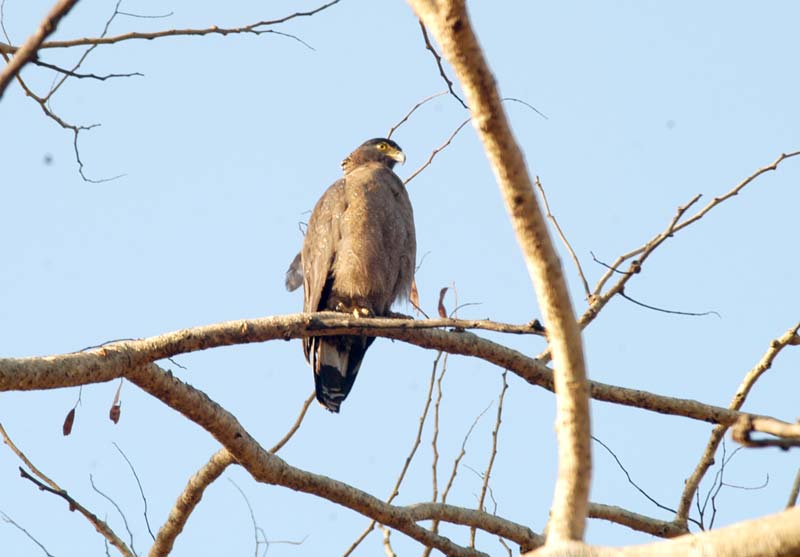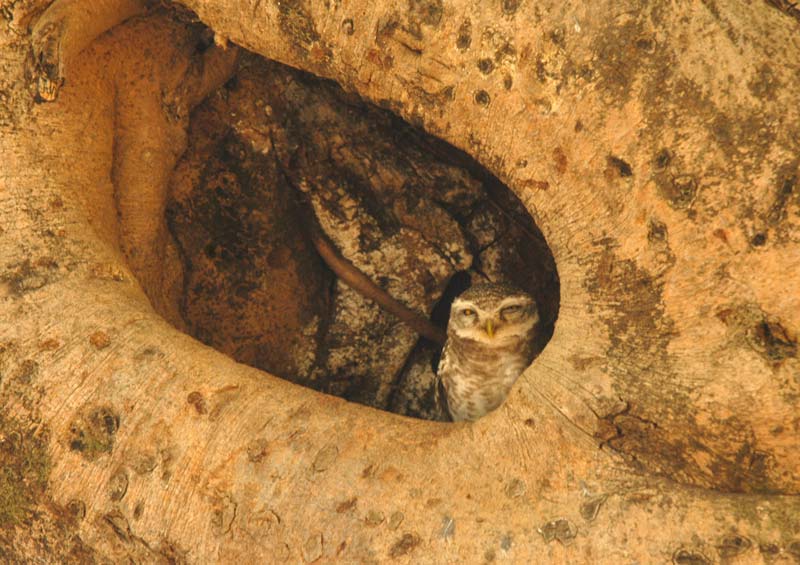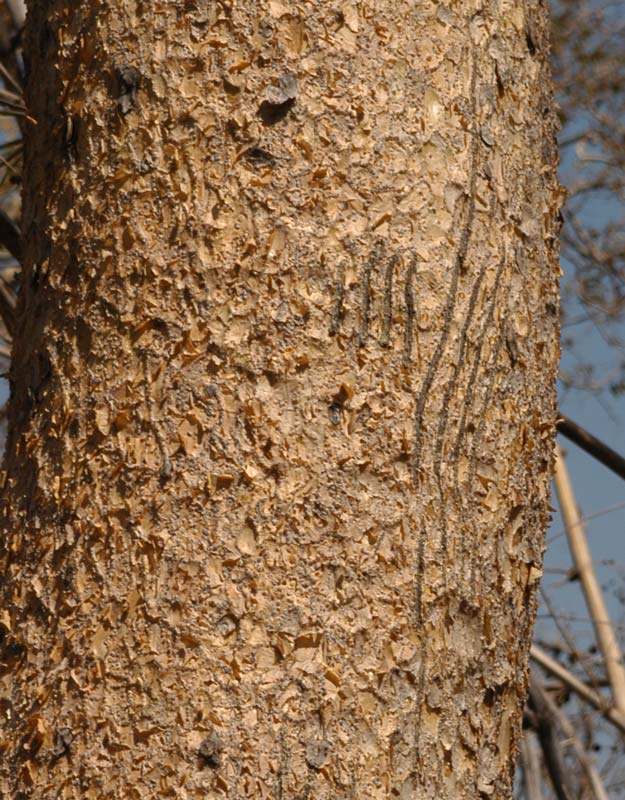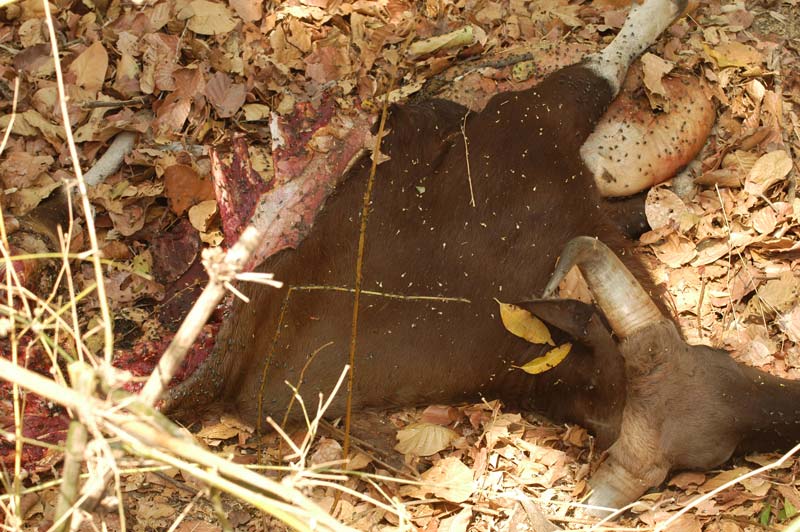Just back from Shadowhawk's India expedition and thought i'd share some photos and do a bit of a write-up.
The expedition was led by Max from Shadowhawk and a small group of us went for a week to Kahna National Park in Central India.
Accommodation was luxurious by bushcraft standards we stayed in private lodges, each getting our own double bedroom lodge. Meals were provided and we were able to concentrate on the tracking.
This was the first time Shadowhawk have run a tracking course in India and I think the Indian hosts were a bit shocked that we wanted to track on foot in Tiger country. Normally they cater for rich westerners who like to sit in the comfort of a jeep and be driven around to tick off the wildlife in their books. Our arrival quickly disabused them of this idea as we disappeared into the forest in the dark as soon as we arrived. The lodge had their own ranger who accompanied us and loved every minute. By the end of the week he was enthusiastically tracking with the rest of us and getting lost in discussions of tracks, to the horror of his bosses.
Maybe I should set the scene a bit. Kahna national park was the inspiration for Kipling's Jungle Book. It is nominally separated into two sections a 50,000 acre core area and a 100,000 acre buffer zone surrounding it. Local indigenous people were cleared from the core area into the buffer zone, though in practice the animals come and go as there is no physical barrier between the two areas. The core area is split into west and east sections, with the eastern section being out of bounds to everyone except the researchers and rangers. Temperatures while we were there were in the high 30s, so the day was split into two sections. In the mornings we traveled around the core area by jeep or elephant and in the afternoons we tended to track through the buffer zones and, quietly, into the edges of the core area. The middle of the day was spent by the poolside at the lodge or sheltering from the hammering sun and discussing tracking in general.
The trip was absolutely amazing. The only problem, which we all got a bit annoyed about at times, was the insistence of the authorities that we could not get out on foot in the park's core area. Sometimes this drove us almost to tears as we found interesting tracks disappearing of into the undergrowth. The Indian authorities are absolutely fearful of having their first tourist fatality and this has led them to be extremely overcautious.
We got loads of dirt time through the week and the chance to track some really unusual animals. Max is a legend as far as tracking goes and we all came away with our tracking skills further improved.
Hopefully Shadowhawk will be returning to India next year and I would thoroughly recommend the trip particularly as they are currently negotiating with the authorities for access to the restricted Eastern zone of the park, where we would be allowed to track on foot away from the eyes of the rich tourists in their jeeps.
Anyway here's a few pictures from the trip. Any questions fire away..
These guys are Hamuman Langurs. They are named after the monkey god and are everywhere since although they are predated on by Dhole, Leopard and Tiger they are pretty smart
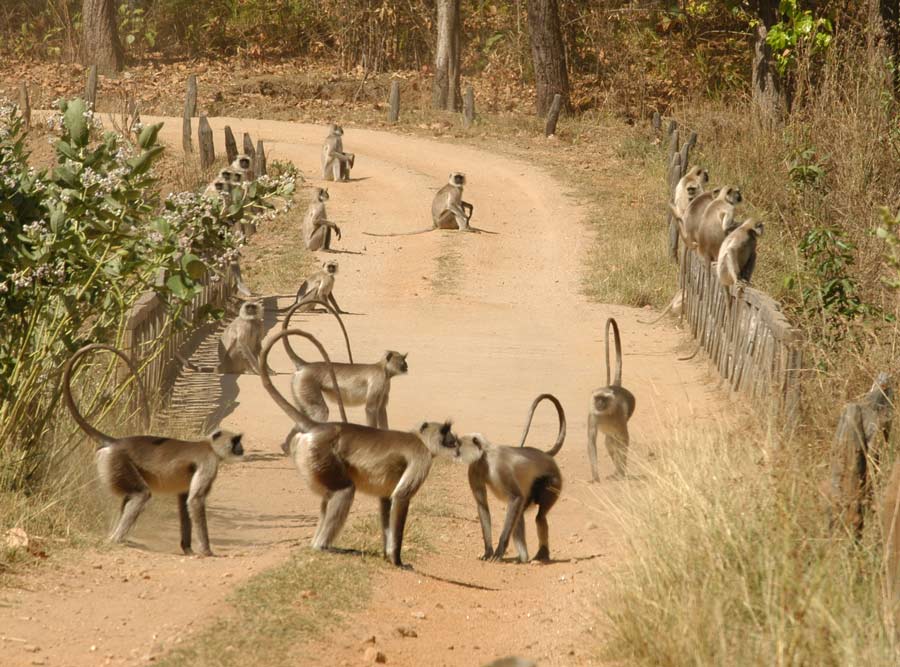
Possibly the most effectively camoflagued hunter i've ever had the pleasure of spotting. Can you see him yet?
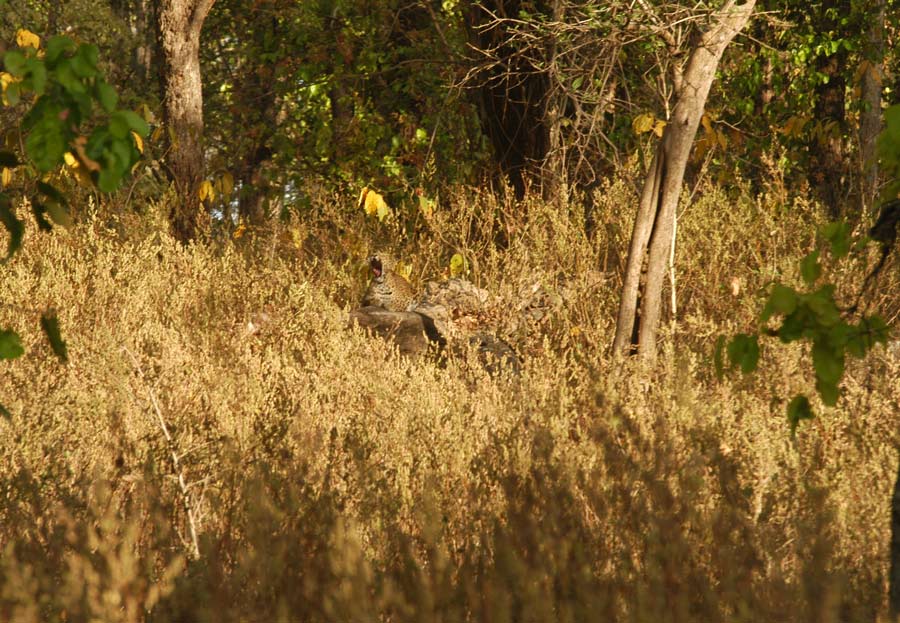
How about now Mr Leopard?

We found this track..

Followed it until we saw movement in the bushes..
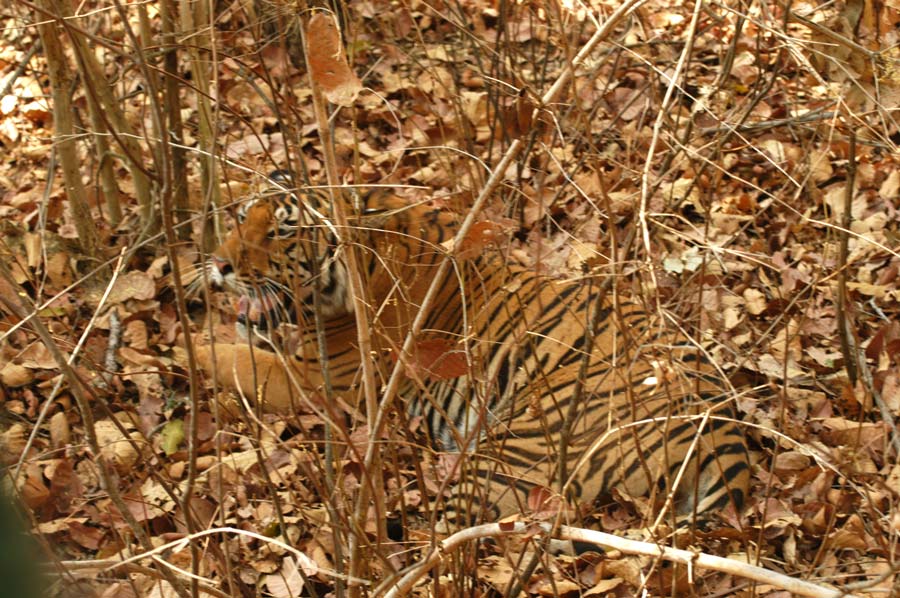
Fortunaately he'd already eaten half a Gaur so wasn't interested in any of the bald monkeys

He truly was an awe inspiring creature - an adult male in his prime. For reference the Gaur is a gigantic buffalo that is easily the most dangerous Indian animal as far as humans are concerned
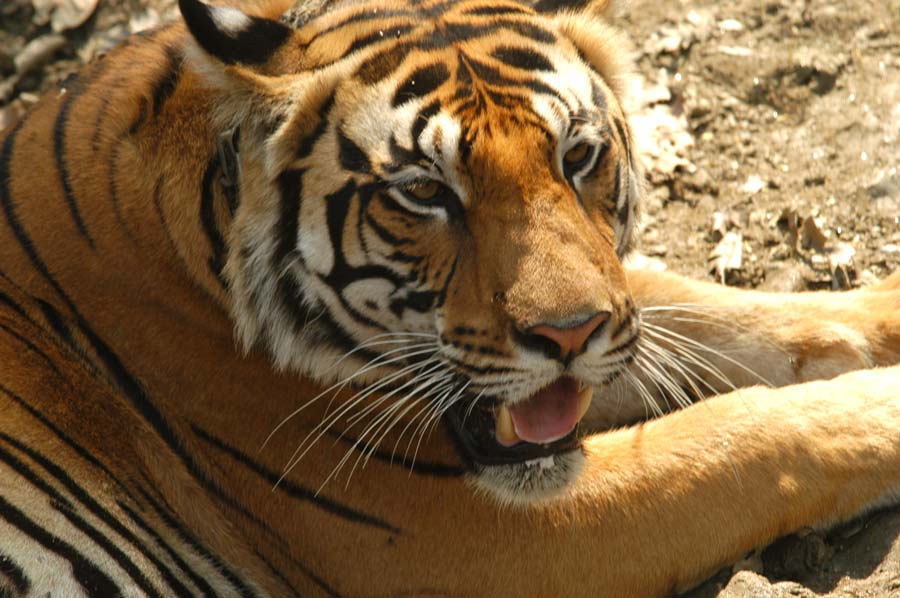
Here's a Gaur while alive and believe me they're massive
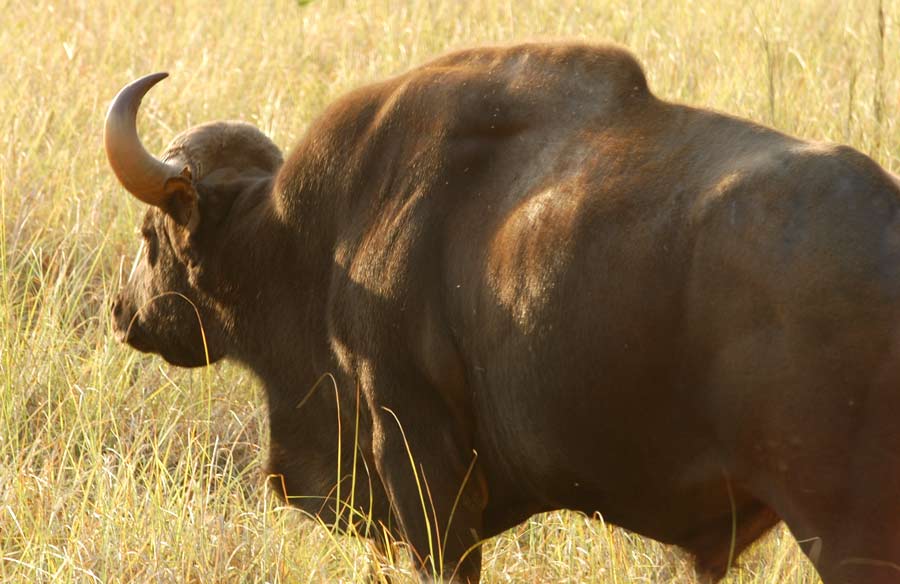
This was an interesting track - Sloth Bear. We actually encountered one in the jeep. But as soon as we spotted it the driver accelerated towards it rather than stopping, so of course it vanished into the forest and we lost it.
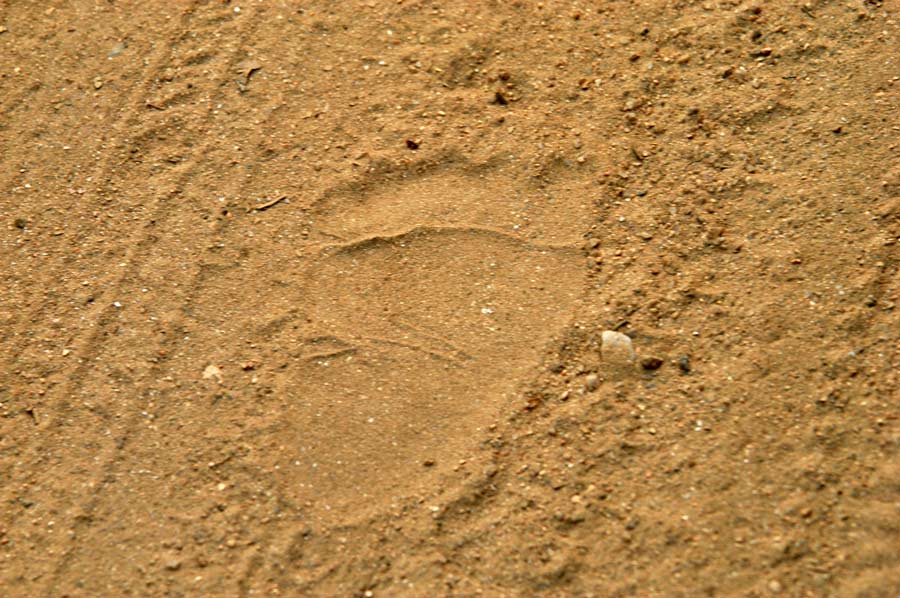
This was a dove that had been caught by one of the local farmers who put birdlime sticks in the trees. our guy freed it and removed the lime (actually a glue made from sap)
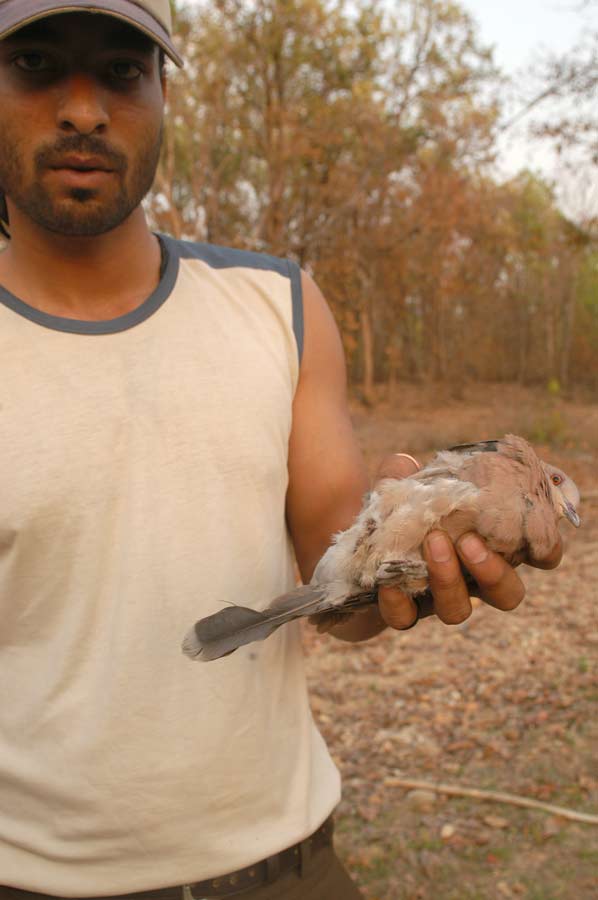
And here's a birdlime stick in the trees

These are the Swamp Deer or Barasingha - they are the most endangered animal in the park and the reason that WWF and others provide funding. There are only about 400 of them left in the world and they are all at Kahna. This is a bachelor group just hanging around scoping for girls

These are the Cheetals, the most common deer in the park and the predators' main food of choice
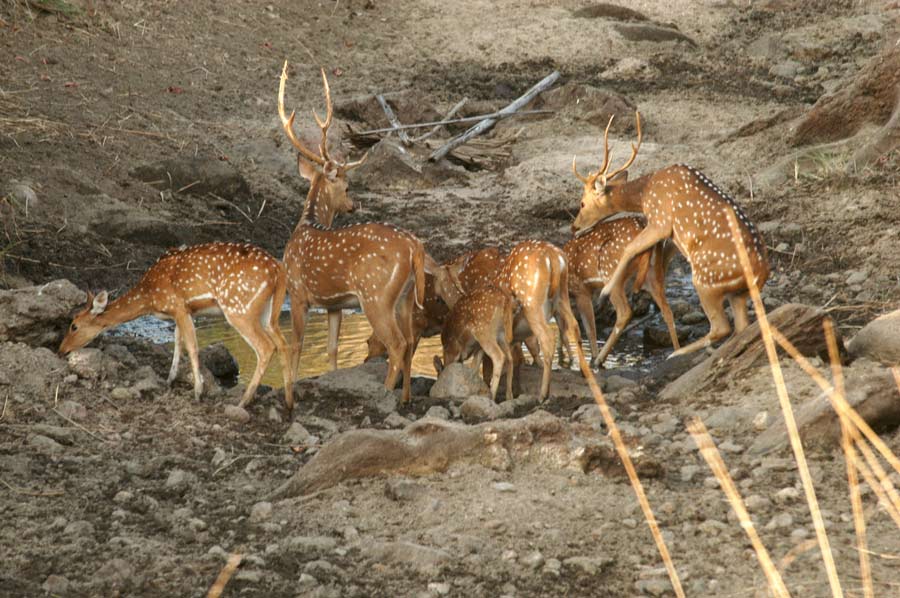
And finally for now my favourite animal of the entire trip - the Dhole. We watched them hunt and feed, play and sleep and I could have sat for days more watching them. They have been known to kill tigers, but they don't show their ferocity just a boundless curiosity with everything they come across. They are also smart as hell.
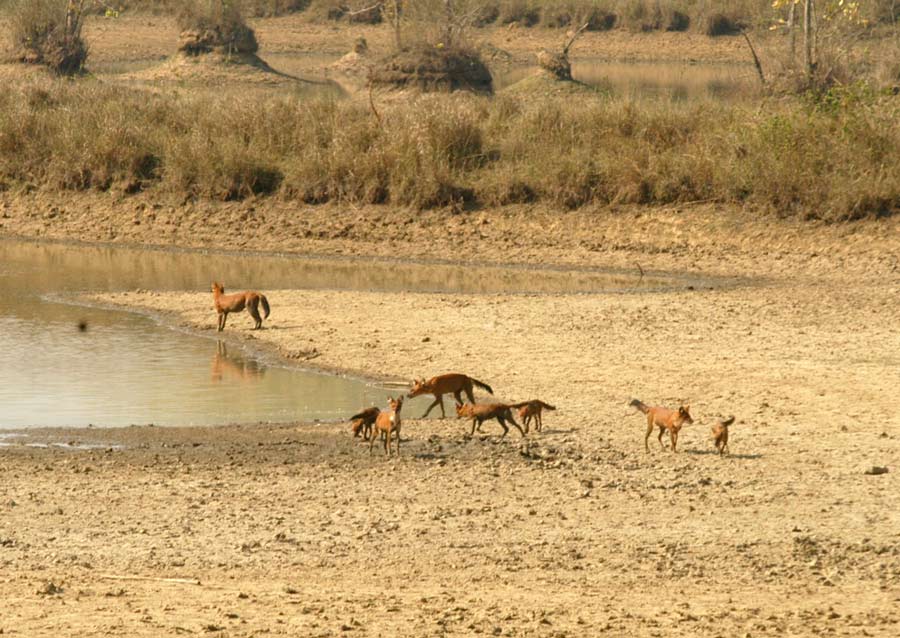
Looking at them you really can see that they are fox and wolf and dog and yet none of them at the same time.
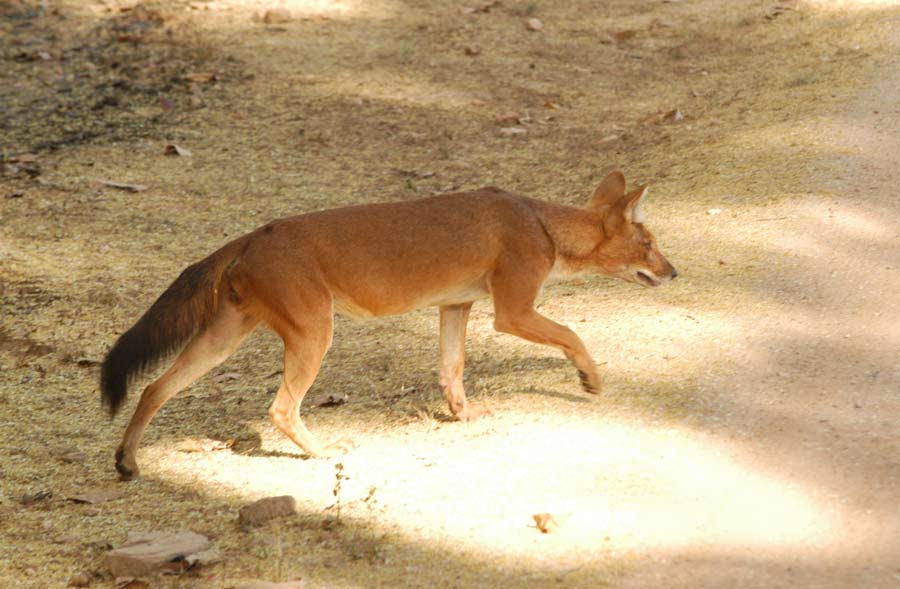
The best description we could come up with was that they had the bodies of the african wild dog, with a fox's head stuck on it. I loved them and they on their own would have made the trip worthwhile.
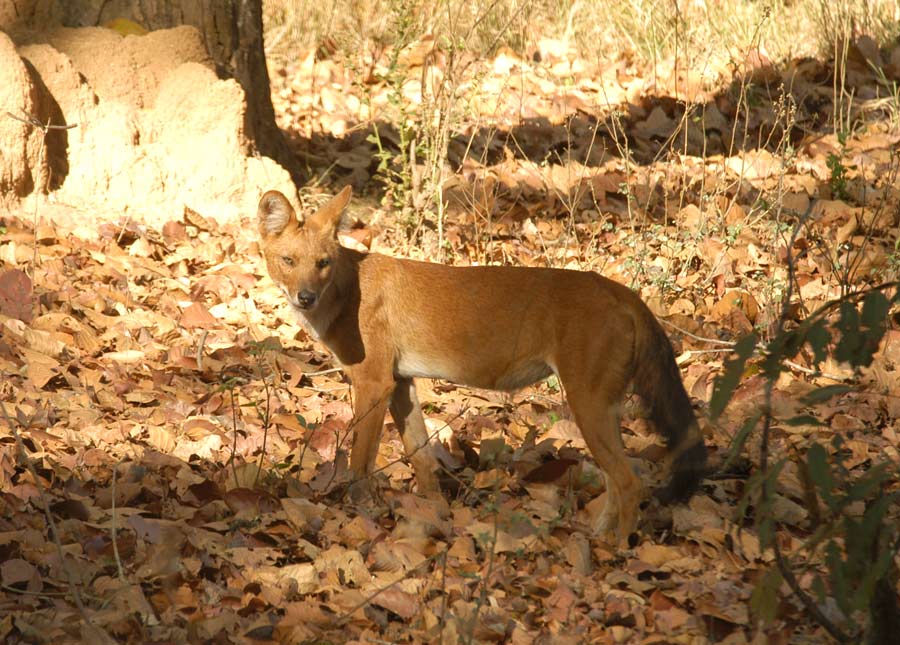
Anyway that's more than enough pictures for now - i've probably clogged everyones computers up! I have loads more though so will stick some more up later if anyone would like to see them.

The expedition was led by Max from Shadowhawk and a small group of us went for a week to Kahna National Park in Central India.
Accommodation was luxurious by bushcraft standards we stayed in private lodges, each getting our own double bedroom lodge. Meals were provided and we were able to concentrate on the tracking.
This was the first time Shadowhawk have run a tracking course in India and I think the Indian hosts were a bit shocked that we wanted to track on foot in Tiger country. Normally they cater for rich westerners who like to sit in the comfort of a jeep and be driven around to tick off the wildlife in their books. Our arrival quickly disabused them of this idea as we disappeared into the forest in the dark as soon as we arrived. The lodge had their own ranger who accompanied us and loved every minute. By the end of the week he was enthusiastically tracking with the rest of us and getting lost in discussions of tracks, to the horror of his bosses.
Maybe I should set the scene a bit. Kahna national park was the inspiration for Kipling's Jungle Book. It is nominally separated into two sections a 50,000 acre core area and a 100,000 acre buffer zone surrounding it. Local indigenous people were cleared from the core area into the buffer zone, though in practice the animals come and go as there is no physical barrier between the two areas. The core area is split into west and east sections, with the eastern section being out of bounds to everyone except the researchers and rangers. Temperatures while we were there were in the high 30s, so the day was split into two sections. In the mornings we traveled around the core area by jeep or elephant and in the afternoons we tended to track through the buffer zones and, quietly, into the edges of the core area. The middle of the day was spent by the poolside at the lodge or sheltering from the hammering sun and discussing tracking in general.
The trip was absolutely amazing. The only problem, which we all got a bit annoyed about at times, was the insistence of the authorities that we could not get out on foot in the park's core area. Sometimes this drove us almost to tears as we found interesting tracks disappearing of into the undergrowth. The Indian authorities are absolutely fearful of having their first tourist fatality and this has led them to be extremely overcautious.
We got loads of dirt time through the week and the chance to track some really unusual animals. Max is a legend as far as tracking goes and we all came away with our tracking skills further improved.
Hopefully Shadowhawk will be returning to India next year and I would thoroughly recommend the trip particularly as they are currently negotiating with the authorities for access to the restricted Eastern zone of the park, where we would be allowed to track on foot away from the eyes of the rich tourists in their jeeps.
Anyway here's a few pictures from the trip. Any questions fire away..
These guys are Hamuman Langurs. They are named after the monkey god and are everywhere since although they are predated on by Dhole, Leopard and Tiger they are pretty smart

Possibly the most effectively camoflagued hunter i've ever had the pleasure of spotting. Can you see him yet?

How about now Mr Leopard?

We found this track..

Followed it until we saw movement in the bushes..

Fortunaately he'd already eaten half a Gaur so wasn't interested in any of the bald monkeys

He truly was an awe inspiring creature - an adult male in his prime. For reference the Gaur is a gigantic buffalo that is easily the most dangerous Indian animal as far as humans are concerned

Here's a Gaur while alive and believe me they're massive

This was an interesting track - Sloth Bear. We actually encountered one in the jeep. But as soon as we spotted it the driver accelerated towards it rather than stopping, so of course it vanished into the forest and we lost it.

This was a dove that had been caught by one of the local farmers who put birdlime sticks in the trees. our guy freed it and removed the lime (actually a glue made from sap)

And here's a birdlime stick in the trees

These are the Swamp Deer or Barasingha - they are the most endangered animal in the park and the reason that WWF and others provide funding. There are only about 400 of them left in the world and they are all at Kahna. This is a bachelor group just hanging around scoping for girls

These are the Cheetals, the most common deer in the park and the predators' main food of choice

And finally for now my favourite animal of the entire trip - the Dhole. We watched them hunt and feed, play and sleep and I could have sat for days more watching them. They have been known to kill tigers, but they don't show their ferocity just a boundless curiosity with everything they come across. They are also smart as hell.

Looking at them you really can see that they are fox and wolf and dog and yet none of them at the same time.

The best description we could come up with was that they had the bodies of the african wild dog, with a fox's head stuck on it. I loved them and they on their own would have made the trip worthwhile.

Anyway that's more than enough pictures for now - i've probably clogged everyones computers up! I have loads more though so will stick some more up later if anyone would like to see them.

 . "There may be trouble ahead - but while there's music and..."
. "There may be trouble ahead - but while there's music and..."